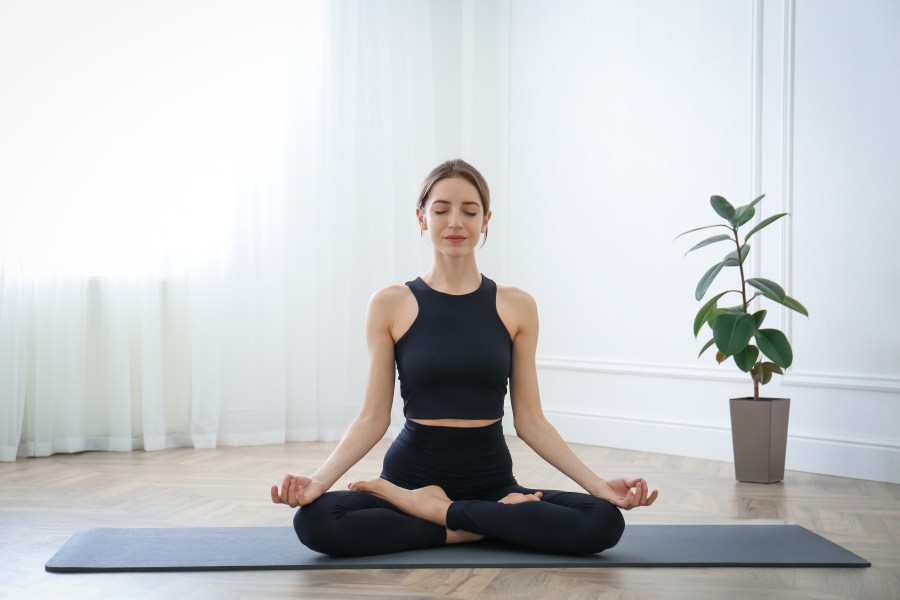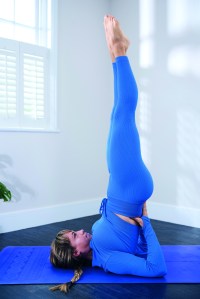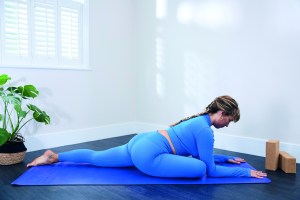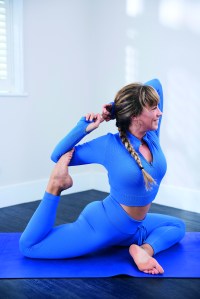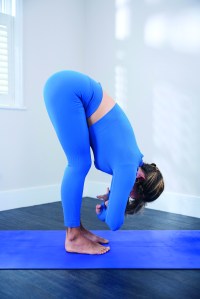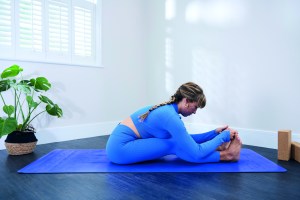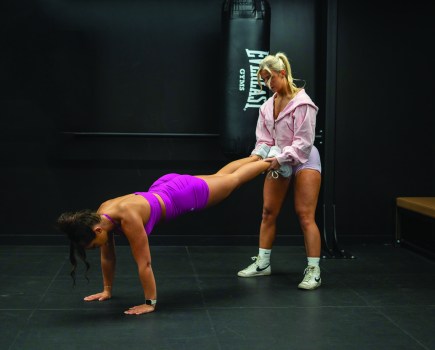Add some calming yoga poses to your day with this 10-minute yoga practice from Cat Butterfield, yoga teacher and founder of the Well Woman Yoga app.
In our fast-paced lives, dedicating just 10 minutes to yourself can work wonders for improving your wellbeing. It might surprise you, but you don’t need to attend an hour-long studio class to feel the benefits of yoga: even just a few minutes of breathwork, short meditation or calming yoga poses is enough to give you a boost.
Try this 15-minute energising yoga flow workout
Taking a short time for your practice provides a momentary pause, allowing you to reset, rejuvenate and be more present. It also gives you an opportunity to reconnect with yourself and foster greater self-awareness. So, while it may seem like a short time, setting aside just 10 minutes for some calming yoga poses offers benefits both on and off the mat, from reduced stress and enhanced productivity to improved mental, emotional and physical wellbeing.
The sequence
The following calming yoga poses are designed to promote calm, reduce stress, balance hormones and help you find more peace in life. Each exercise includes step-by-step instructions and the benefits for your body and nervous system. And you can do them anywhere!
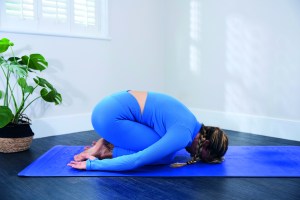
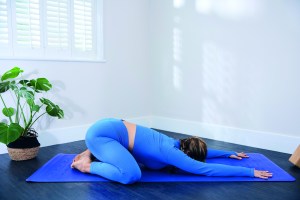
Child’s pose
Benefits: The first variation releases tension in the shoulders as you allow your shoulders to relax and fall alongside your body. The second variation provides relaxation, stretches the back and releases tension in the inner hips, which helps to ease tension and stress.
How to do child’s pose:
- Variation 1: Kneel on the mat, sit back on your heels and bring your forehead to the ground (or a cushion). Rest arms alongside your body with palms facing up.
- Variation 2: Take knees apart and your arms reaching forward, while lowering your chest towards the floor.
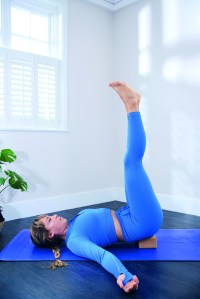
Legs raised
Benefits: Having the legs raised higher than the heart is called an inversion in yoga, and inversions stimulate the parasympathetic nervous system, which is responsible for the body’s rest and digest response.
How to do a leg raise:
- Either raise your legs by lying at the edge of the room and resting your legs up the wall or place a block or cushion under the lower back (A).
- If you already practise shoulder stands, working with legs raised can enhance the benefits of this pose (B).
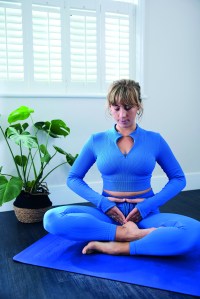
Alternate nostril breath
Benefits: This breathwork technique promotes balance in the nervous system, enhances focus and reduces stress and anxiety.
How to do alternate nostril breaths:
- Make sure you are sitting comfortably and begin by taking a few deep breaths in and out of your nose, allowing the breath to travel down to the tummy (A).
- Place the middle finger of one hand between your eyebrows. Throughout the technique, use your thumb to close one nostril (B) and your ring finger to close the other (C).
- First, close your right nostril and inhale through the left nostril, sending the breath deep into the belly. Then, switch your fingers to cover your left nostril and exhale through the right nostril. Repeat, this time inhaling through the right nostril and exhaling through the left. This completes one full round: repeat five times.
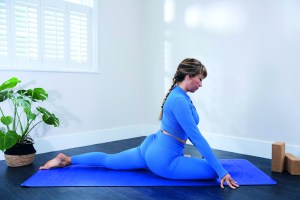
Pigeon pose
Benefits: Pigeon pose enhances hip flexibility and can alleviate tension in the lower back and hips. It also stretches the thigh muscles, promoting better posture and an increased range of motion.
How to do pigeon pose:
- From a plank position, bring your right knee forward and lower yourself to the floor, aligning the front knee with the right wrist and moving your ankle in front of your left hip. Send the opposite leg straight back on the floor behind you (A). If you don’t feel stable here, place a cushion or block beneath you. Fold forward gently (B).
- Advanced variation: Lift the back foot and hold with your hand or bind with your arm (pictured). This enhances this pose by finding a deeper stretch and incorporating the quad muscle.
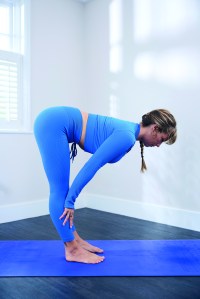
Forward fold
Benefits: Both standing and seated forward folds calm the nervous system by promoting relaxation, reducing stress and increasing blood flow to the brain. Seated forward folds also calm the nervous system with gentle compression of the abdomen.
How to do a forward fold:
- Practise a standing forward fold by standing with feet hip-width apart, hinging at the hips, and lowering your upper body toward your legs, keeping a slight bend in your knees (A&B).
- To practise a seated forward fold, sit with legs extended, then hinge at the hips and reach for your toes, relaxing your neck and spine. Feel free to keep your legs slightly bent.
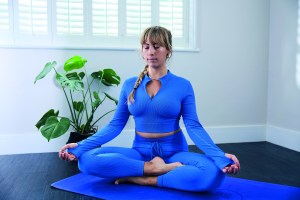
Meditation
Benefits: Meditation reduces stress and improves focus for enhanced emotional balance and overall wellbeing.
How to meditate:
Practise meditation by finding a quiet space, sitting comfortably and focusing on your breath or a mantra, gently letting goof distractions.
10 minutes of calm has been created by Cat Butterfield, yoga teacher and founder of the Well Woman Yoga app. Join the family and see how Cat can help to enhance your life by downloading the app to enjoy a seven-day free trial. Sudor Interactive is the leading tech company providing fitness professionals a platform to showcase and promote their offering digitally.

